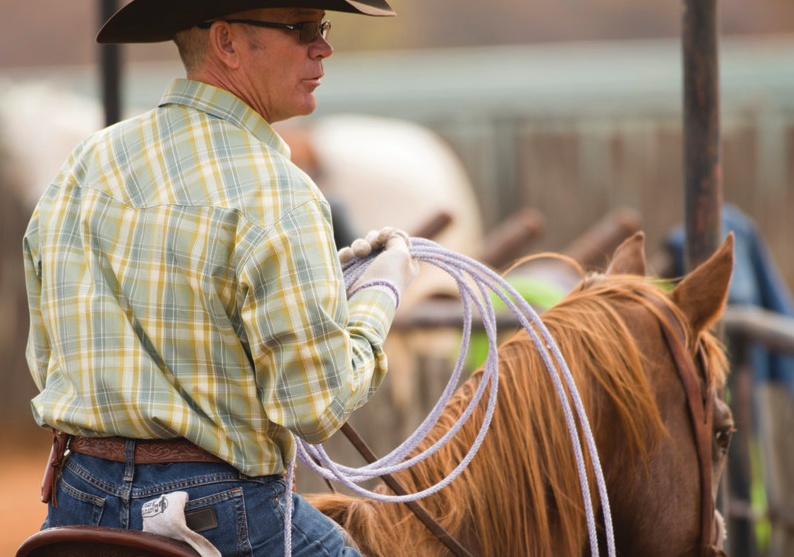It’s a fierce market, this rope business. Particularly today, as the patent has just ended on Classic’s revolutionary four-strand, core rope, there’s an energy coursing through the industry—an anticipation of change and opportunity, and for some, maybe loss.
But, in interviews with the ropemakers, it’s not the shark tank that prevails. Rather, themes of work ethic, family, teamwork, respect, and God emerged. Stories of lessons learned, capabilities realized, and earnest desires to do more and better were shared; while a deep sense of pride in the products made, the teams that make them, and the brands that produce them was expressed.
Yes, it’s a fierce market, but it’s made up of men and women devoted to improving the sport of team roping by making the best ropes around. These are their stories.
Barry Berg of Cactus Ropes
Pleasanton, Texas
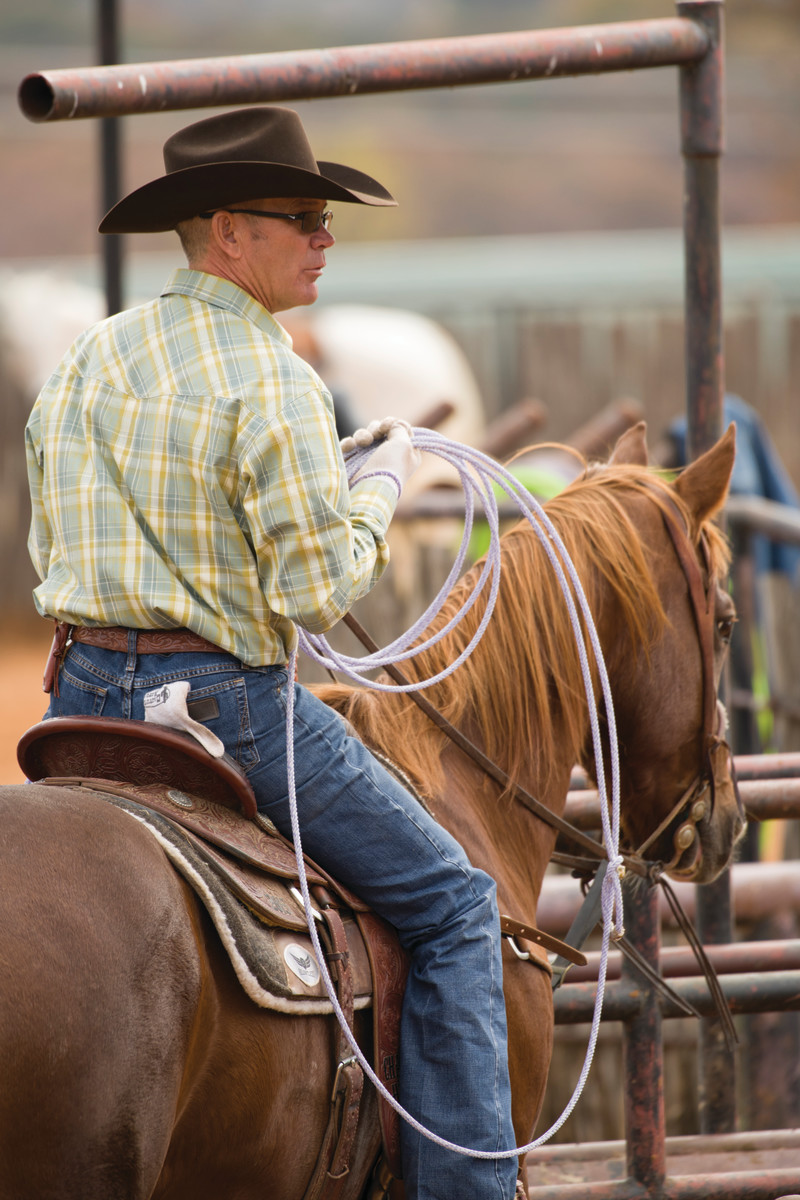
When Barry Berg was hired on at Cactus on July 15, 1992—about a year after the company was established—experience with ropes was not his claim to fame.
“I’m telling you, there’s never been one person with one day of rope experience outside of Cactus Ropes,” Berg regaled.
It’s a different story these days, but in the beginning, it was rough going for Cactus—a 1991 start-up courtesy of famed South Texas roper and NFR-qualifier “Cactus Jack” Stephenson, with his cousin, Joe Mathews, and another partner, Mike Piland. According to Berg, since Classic was only 5 years old at the time, and was really the only “big” company in the market, Stephenson and crew figured, why not.
“They had no idea the complex issue of rope making when they decided to jump on board,” Berg said of the ranch-raised entrepreneurs.
And, in that sense, Berg—who’d studied ranch management, had a then-lifetime of feedlot experience, and had learned to rope on Stephenson’s ranch, but had no experience building ropes—was a perfect fit for the team.
“My first job when I came to Cactus that day,” Berg remembered, “they had 900 ropes sent back and the then-general-manager said, go through all of those boxes and see if there’s any good ones.”
Berg couldn’t find one good rope out of 900.
The course of Cactus Ropes history changed in a little-known tale that falls squarely on the shoulders of the cowboy code and its rule that a man’s word should never be broken. On a day when Stephenson’s son and 1984 NFR roping partner, Jacky, offered some roping tips to Classic’s then-owner Rick Barton, he was offered payment for his time. Instead, Jacky asked Barton for a lesson in coiling. Barton honored the request and sent Craig Bray to teach Berg and and Jacky’s brother, Robb, how to coil 10 ropes.
“That’s the honest truth,” Berg marveled. “And me and Robb raced back to Cactus, and from that point we developed our own style and our own ideas. But I’ll say to this day, Craig Bray honored what the owner said do and he gave his best effort, and we learned how to coil. Then, through the years, we’ve added stuff and do stuff different from Classic, but that was the moment that we could understand the top and bottom, basically, of the loop.”
Some 25 years later, Berg is the general manager, and he’s certain Robb has now coiled more than a million ropes in his ongoing career at Cactus… maybe two million. And, each individual rope manufactured by Cactus is a great source of pride. Not just for Berg, but for the team.
“You think back to how much pride goes into each of these ropes,” he said. “There’s not a gauge that says tighten the lug nut this much. It’s how much pride you put into hitting the spot, and the eyes of the individual ropes coming off the rope machine, and the coiling. Every single thing. It’s an incredible team we have down here.”
As for changes in the industry and looking forward, Berg exudes nothing but confidence in his team that has spent the past many years at full capacity, when it comes to meeting the demands of the market. The core-rope patent has, indeed, offered a change-up, and it is one that Cactus welcomes, not only because they now get to partake in the core-rope market, but because it has allowed them the time to seek new opportunities and create, in addition to their own core ropes, Thrilla and Swagger, the what Berg believes will be “the next incredible ropes in the industry.”
Ken Bray of Classic Rope
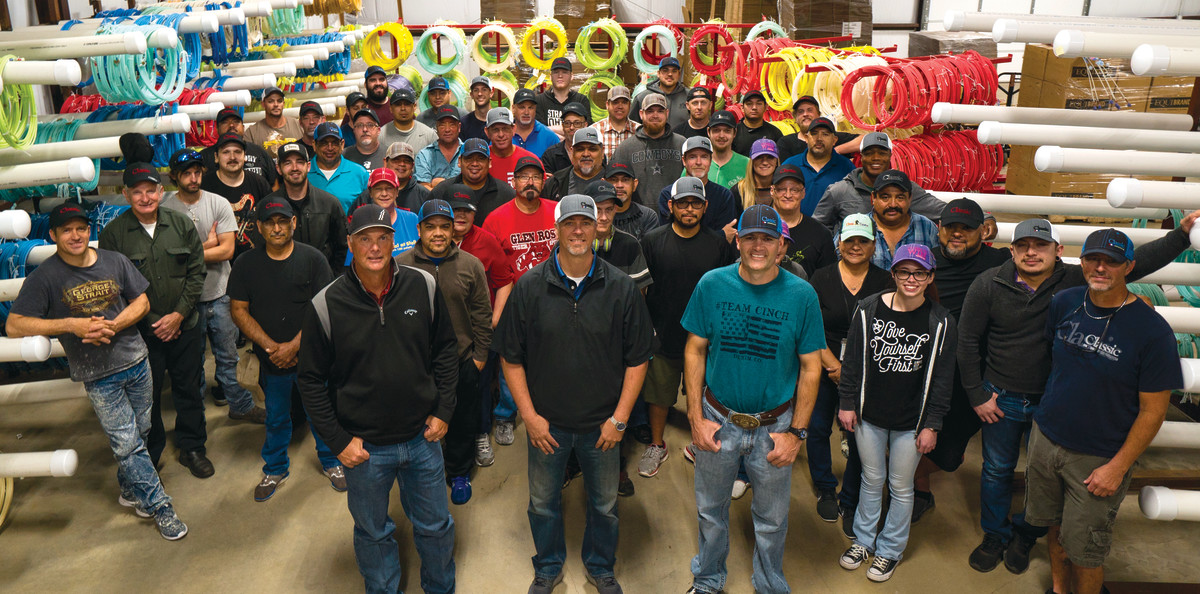
Granbury, Texas
A born and raised team roper, Ken Bray was working as a bank loan officer in 1987. When one of his customers, a CPA named Ted Tomerlin, asked him if wanted to be a part of a new rope-making business with Derwood Miller and his nephew, Curt Matthews, Bray didn’t blink at the opportunity to trade in his nine-to-five for a career in the Western industry.
“I learned a lot at the bank, and I wouldn’t trade for the time I spent there,” Bray explained, “but the suit-and-tie environment was not my style.”
And so began a long and fruitful career with Classic Rope, which was established a year earlier, in 1986. Bray was there through Matthew’s tenure as he revolutionized the sport of team roping with the first poly-nylon blend—Classic’s Money Maker—which set the tone for Classic’s future as game changers in the rope industry.
“After the Money Maker,” Bray said, “the business grew quickly, and we added more poly blends to our product offering as we began to test new fibers and blends.”
When Miller and Matthews sold the business to West Virginia team ropers Rick Barton and Mike Hall in 1992, Bray became a partner in the venture—a position he maintains today, as CEO of Equibrand, Classic’s parent name since 1994, which also encompasses its other brands, like Classic Equine.
In the past 30-plus years, the company has seized endless opportunities to not only advance the technology behind each rope, but also to revolutionize and enhance the very way the rope market operates, as well as invest in and promote the sport of team roping and its community whenever possible.
“It has been a blast to see the dramatic and positive changes to the sport over the past 30 years,” Bray said.
To name each feat and innovation would be a herculean task, but their capacity since 1997 to create their own string is worthy of note.
“Our ability to control the fiber that goes into the ropes has helped us stay on top and remain the industry leader,” Bray posited, taking a moment to recognize the leadership in the rope division that allows for Classic’s ongoing success. “Craig Bray (Operations Manager and Ken’s brother), George McQuain (Rope Production Manager), and Dallas Clay (Fiber Production Manager) are the key leaders in production at Classic. And, we have people that have been with the company their entire adult life—some for 30 years. We’re a team of people actively involved in the sport and in the horse industry.
“We made a vow,” Bray continued, “that every new rope we introduce would be uniquely different from the others, and it would be one that solved a problem or fit a specific need for feel and roping style.”
It’s a vow Bray and the Classic team intend to keep.
“We built our business by taking care of our customers, our people, and our brands, while being innovative and dedicated to new product development and design,” Bray remarked. “Moving forward, our customers can expect us to continue to innovate and pursue new and better ways to improve rope quality, feel, and performance that helps ropers compete to their greatest potential.”
Paul Sullivan of Lone Star Rope Company
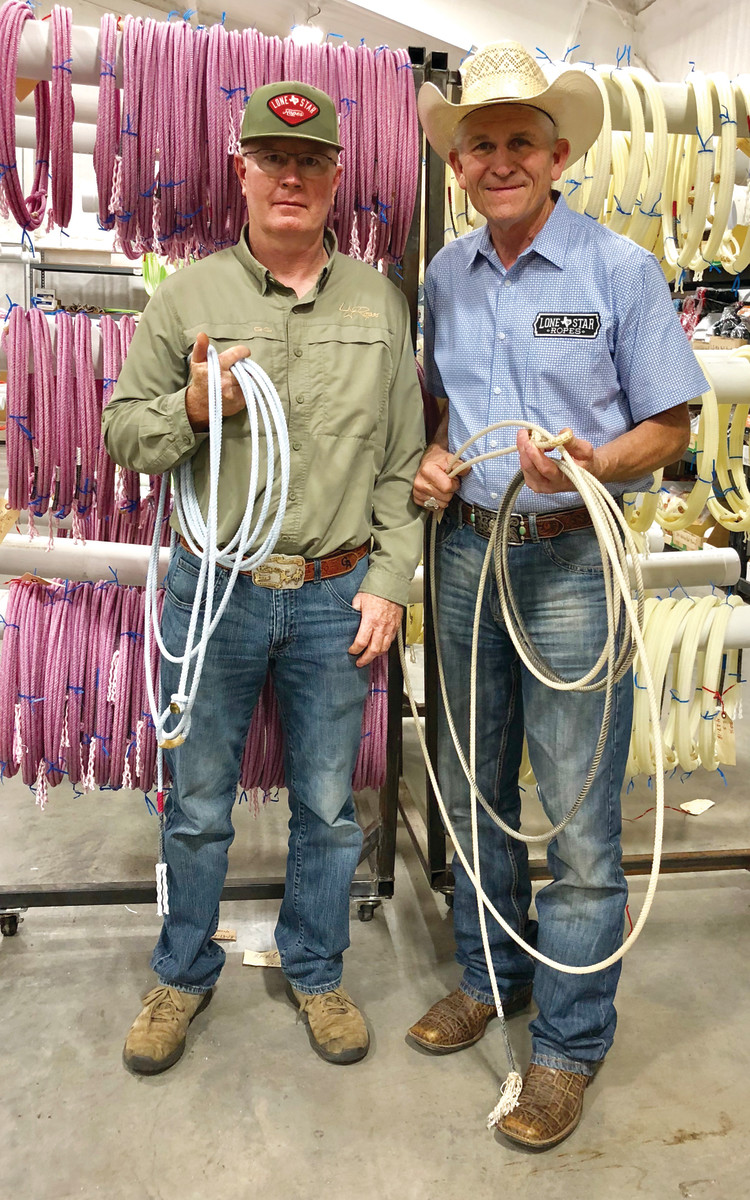
Buffalo, Texas
As the general manager for nearly two years, Paul Sullivan is glad to have found a home at Lone Star Rope Company. What began in 2004 as a hobby for brothers Kevin and Ritchie Pate, became an official business in 2007, when the brothers realized their ropes were deserving of the time, sincere effort, and dollars required to make a rope company work.
“The Pates are extremely honorable,” Sullivan stated. “They take a great deal of pride in everything that they do, and they will not tolerate second best. They just won’t.”
Fortunately for them, their venture into the industry began in a partnership with veteran rope maker Guy Alford, who originally supplied the machine with which the brothers experimented. According to Sullivan, Alford, who continues to serve as Lone Star’s operations manager, has been instrumental in the company’s survival as a start-up, and its development into a full-fledged, competitive rope company with more than 20 years under its belt.
“Guy has a great feel for the ropes,” Sullivan commented. “He’s the guy who’s been here every day and has put his heart and soul into it. You couldn’t pay him enough money to go elsewhere because he just loves it so much, which is just invaluable to me as a general manager and invaluable to the owners.”
The Pates, of course, also recognize Sullivan’s immense value as a tried-and-true innovator. Originally from Utah, Sullivan’s rope-making career began as he was building a mail-order business for eight-time world champion roper Roy Cooper, who was having difficulty with his supply. Being isolated from the rope makers that existed at the time, Sullivan traveled to Texas to learn the skill, and returned to Utah with the simple goal of providing enough ropes to meet the catalog’s needs. But then he had an idea.
“This is in the mid-’80s,” Sullivan delved, “and at the time, the ropes in the rope bags all looked the same. They might write extra soft on the burner, but they all looked the same. So, to make mine look different, I braided a rattler tail and called it Rattler Ropes.”
Initially, the ropes were offered exclusively through Cooper’s catalog, and then Sullivan operated Rattler Ropes independently until selling the company to Equibrand in 1997. Then, the following year, Sullivan applied for and was granted, on April 20, a 20-year patent on a four-strand, core lariat rope. By then selling the patent to Equibrand, Sullivan’s innovation was given a platform that allowed it a lasting and pivotal role in the sport of team roping.
“Up until then,” Sullivan said, “four-strand ropes had never been made. That changed the whole rope world. The rope became faster; the sport became faster. It definitely changed the rope world forever.”
In his 1998 patent application, Sullivan cites the importance of even a tenth of a second when world record runs were clocking in at 3.8 seconds. In 2017, when Kaleb Driggers and Junior Nogueira tied the world record at 3.3 seconds, they were both swinging Classic’s Powerline4, featuring the patented Coretec technology, which doesn’t in any way counter Sullivan’s assertions.
Now, with the support of his new employers, Sullivan is looking forward to discovering what else he can create in an industry that he predicts to be on the cusp of yet another evolutionary shift.
“For me,” Sullivan, a life-long pragmatic daydreamer, explained, “rope making is just a science. It’s just physics. So, I will concentrate on physical things that can make the rope marketable-y different, to where the consumer can understand why that can help them. I would like to take the science of it to why this rope can speed up your times, why this rope will help you win.”
And if you think Sullivan has plans to once again do what he has already done, think again.
“I am dedicated and motivated to make a better cord rope than has ever been produced in the past,” he resolved. “Even being the original inventor, I want to make a better one than I originally invented.”
Curt Matthews of Top Hand Ropes
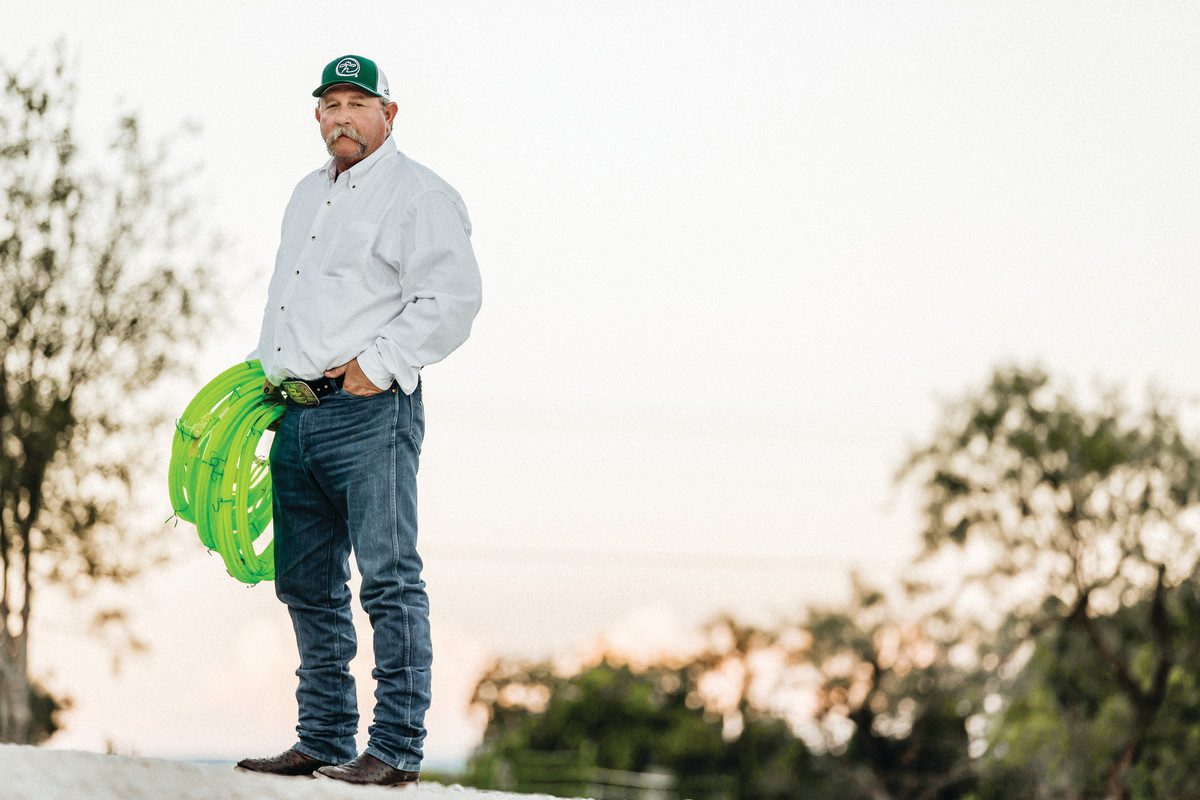
Granbury, Texas
If there’s a cowboy craftsman rope maker, he is Curt Matthews. His beginnings are storied, having spent nearly 20 years learning the trade in Grand Prairie, Texas, at the family owned-and-operated Pete Emmons Rope and Saddle Company under the tutelage of early innovator Pete Emmons. When his duties as a husband and then-father-to-be challenged him to make his own go in the industry, the result was Classic Ropes.
“It was in 1986,” Matthews started, “and I decided I had some ideas in my own head and I knew if I was going to make them work, I had to do it on my own machines and my own time.”
And, in short order, Matthews was making the most of those ideas in the form of the world’s first poly-blended rope, Classic’s Money Maker.
“I knew what I was looking for,” Matthews said, “and if I could just feel it, I’d have it. I knew I would be able to identify it when I felt it.”
Matthews did his best to let his string broker know what he was looking for, and when the box arrived, he found some blue-green string at the bottom.
“Al Benson was making rope for me, and I said to Al, let’s set this up and run it.”
Much to their surprise, after waxing the rope, it turned green. Today, a green rope might allow for better visibility, but in 1986, when ropes were all the same color and had to be aged, a “green rope” wasn’t anything anybody wanted to get stuck with.
“That’s what ran through my mind when I saw that rope,” Matthews reminisced. “I thought, oh my God. It’s green. But we tied it up and Al took it to a roping in Fort Worth and won money with it, so I started roping with them for quite a while and I was thinking, these are great. Now how are we going to market them?”
Behold innovation #2: Endorsers. It’s a common practice these days for companies to have relationships with top athletes at all different levels of the sport who wear the company logos and use their product and provide endless boots-on-the-ground intel on how the product worked under which conditions. But with the Money Maker, Matthews realized the need for just one athlete to win with his rope and spread the word.
“Denny Watkins was at the top of his game back then and I’d been to a couple of his schools, so I asked Denny to endorse them and he did. The rest is history.”
Matthews’s Classic turned the tide on green ropes, and from there on out, his time at Classic was spent trying to keep up with its orders. Even to this day, the Money Maker remains an Equibrand staple, which makes Matthews proud of the legacy enabled by his now competitor.
A few years following his 1992 sale of Classic Ropes, Matthews found himself reunited with Al Benson who was then the general manager of Fast Back Ropes, but when Benson announced his retirement in 2015, Matthews once again discovered an opportunity to go out on his own, and this time, in 2016, Top Hand Ropes was born.
When asked what Top Hand has to offer, Matthews—who operates Top Hand with his partners, father-and-son ropers Randy and Joe Betsill, as well as businessman Steve Mitchum, and a team of 13—suggested much of that question will be answered by the needs of the ropers who choose Top Hand, but also his vast experience as a rope maker.
“I have a lot of ideas and I can catch a lot of problems earlier,” Matthews, who admits that his deep desire to produce a quality product probably slowed down the production of the Money Maker, revealed.
With around eight ropes on the market, including two cord ropes due out this month, Matthews is in a position to ensure that level of quality in his products, an aspect he is very much enjoying, as such details are non-negotiable for any craftsman worth his salt.
Coy Upchurch of Fast Back
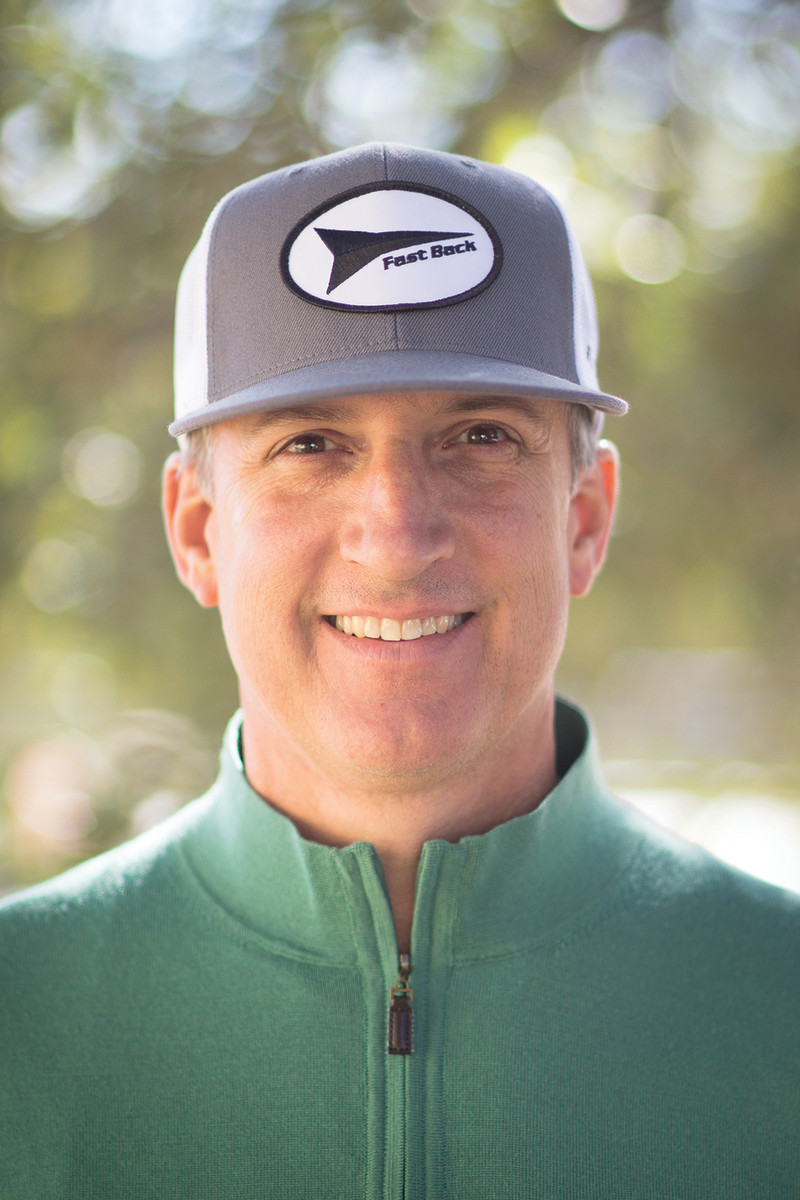
Granbury, Texas
A team roper since he was just 13 years old, Coy Upchurch is the general manager at Fast Back Ropes—a position he’s filled since Al Benson’s late 2015 retirement.
Despite the relative newness of his role, Upchurch and Fast Back go a ways back, to before he had even begun his career in the rope industry.
“Back when I was still buying ropes for myself,” Upchurch delighted, “I was buying Fast Back.”
When Upchurch did join the rope-work force, he spent a solid 10 years with another company before finding his fit at Fast Back, and it’s a tale that parallels Fast Back’s own beginnings. Where, perhaps Cactus Ropes exemplifies one end of the start-up venture with a crew who simply rolled up their sleeves and managed to figure out and excel at something they technically knew nothing about, Fast Back represents the complete opposite end of the spectrum, where, in 1995, the entire crew came together with working knowledge of what would be required and how to do it.
And that kind of experience, Upchurch points out, makes each member of the team an asset.
“It’s a really good crew. The guys on the machines, they work on their own machines. I mean, I have input. And the shop manager, he has input, but we kind of turn these guys loose.
The employees here have a lot of say in the final product. They’re very much concerned with the quality of the product and the rope that we’re putting out, and it’s very much a collective effort.”
A particular point of pride for Upchurch is the company’s commitment to attention to detail, which he feels, allows for the best-feeling rope, right out of the twisties.
“There are differences in how we do things,” he explained. “It costs a little more money and it takes a little more time, but all the little things, I think, add up to a better feeling rope.”
Upchurch’s love of team roping team roping revolves around the great people in the community, and it’s a value that carries over into his work at Fast Back.
“One of the biggest lessons I’ve learned is to get the best people you can get and listen to them. The team here, they’re not just punching the clock and getting their check. And, if a customer has a problem, the team here takes care of it quick. It’s not just the guys in the back. It’s the office, the endorsees, the sales team. It’s just a really good collection of people”




